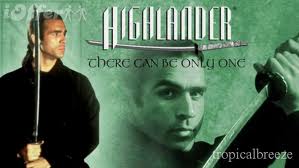In June 2012 I published my second book, To the Grave -
which I forgot to mention in part three was timed to coincide with the anniversary of
D-Day because of the 1944 narrative. It was actually published on the 5th of June though, because I’d
overlooked the fact that Amazon use Pacific Standard Time, but that was the idea.
Anyway, onto The Last Queen of England (LQE). I was very concerned about whether I could
make LQE fit into the series because there was one fundamental thing about it
that was different: it had no past narrative.
I thought about adding one, but in the end I chose not to
because I felt the story was so much more personal to Jefferson Tayte, and I
wanted the focus on him, rather than sharing it with a character in the past as before. And I felt that this story worked better
without a past narrative because of the fast ‘thriller’ pace, which I wanted to maintain. The other concern I had was
that I had written a much darker story with LQE and it was too
dark compared to the first two books. So
that became my focus: to keep the story essentially as it was, but to tone down
its dark side. Originally, the bad guy from the prologue wasn't stealing family heirlooms for the binary digits engraved on them; he was taking them from his victims' scalps with a surgical scalpel inherited from his own ancestor. You see my concern: it was was much darker.
 |
| Outside St Paul's Cathedral. |
My intention was to release LQE a year after To the Grave, thinking that I could get it ready and get a head start on the fourth book so
the gap between books three and four wouldn’t be so long, but it all came
together so much faster than I’d anticipated.
Suddenly I had the chance to release it before Christmas, so that’s what
I did. It was more than ready and I couldn’t
see any reason to hold it back. If I'd stuck to my plan I would only have released it last month! I'm glad I didn't wait.
I really
held my breath when I released this book, hoping that the lack of a past narrative wouldn’t be
an issue and that I'd done a good enough job with all the changes I'd made. It’s been out almost eight months now
and when I look at the ratings and see it on a par with the other two books, I wonder
what on earth I was worrying about. On
reflection, I like the idea that you don’t quite know what you’re going to get
from one book in the series to the next.
I think it keeps things fresh.
As some will already know, I thought at the time that The
Last Queen of England was my last attempt at a writing career. I remember saying to my wife once I’d
finished the original version that I didn’t think I could do it
again. I had written three books and
they had taken several years to write on a full time basis, with no income
and no promise of them ever being read, let alone earning a living from my
writing so I could continue to write. I had thrown everything I had into it, trying three different approaches to the basic genealogical crime mystery concept that the agents and publishers who saw my work universally agreed was a
good one. If LQE wasn’t a success, I
felt I had nothing left to offer. Then
the whole e-book thing came along and Amazon gave me a platform on which to
publish myself. I’m very grateful to
them for the opportunity Kindle Direct Publishing gave me, and of course I'm grateful to the readers who have bought my books. When I write now, I do so with the knowledge
that my stories will be read. I needed to know that if I was going to continue writing, and for that I sincerely thank you.

I mentioned last time that there were a few highlights to
come. The first was when I was contacted
by a French film producer earlier in the year, asking about the TV/Film rights
to In the Blood. My books have sold very
well in France, with In the Blood having been in the Amazon top 100 for around 300 days when I last looked. So although I was surprised
that such an enquiry should come from France, I guess I shouldn’t have
been. I looked into the producer and saw
that among many other things, he’d worked on the film Charlotte Gray and on the
Highlander TV series, so I wrote back and said that the rights were
available.

I had a response to say that
the 'team' were going to look at the story more closely and come back to me with
their creative vision. It was all very
exciting, although I’ve not heard anything more since then. I’m told things can move very slowly with
these things, but even if nothing comes of it, it's great, and very encouraging, to think that In the Blood was being considered for film/TV. Around this time I also had an enquiry about
adaptation rights from a publisher in Turkey, but I decided I wanted to keep all
my translation rights for the time being, to keep my options open and because if I’m
honest with myself I was worried about doing the wrong thing.
And then... Yes, there’s more! A literary agent contacted me recently and I’ll tell you all about that in part
5, which should just about bring things up to date.
 IN THE BLOOD: A Genealogical Crime Mystery #1
IN THE BLOOD: A Genealogical Crime Mystery #1 TO THE GRAVE: A Genealogical Crime Mystery #2
TO THE GRAVE: A Genealogical Crime Mystery #2









.jpg)
.jpg)